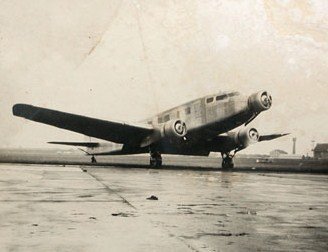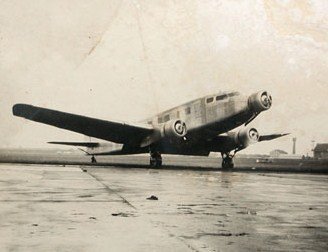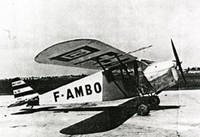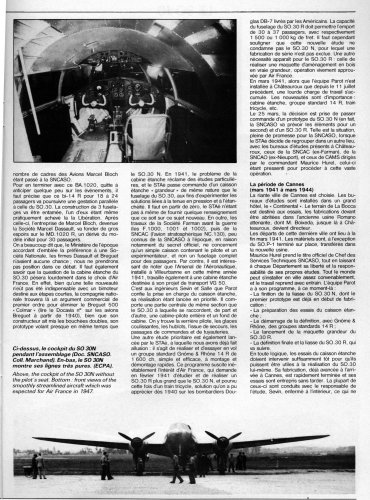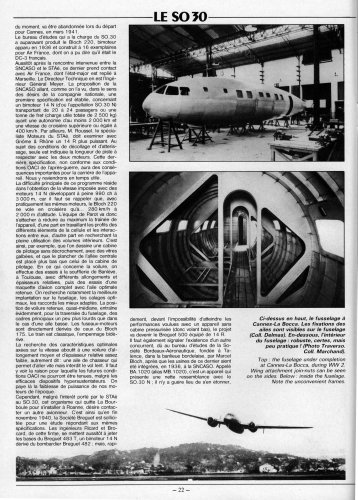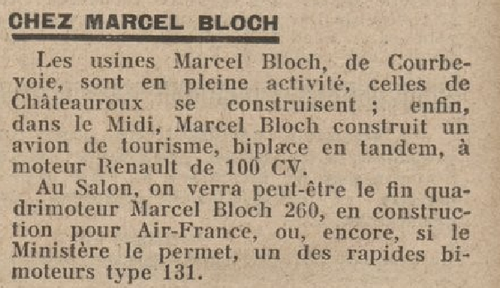After hesitating a while, I've decided to separate the Bloch and Dassault designations, as several numbers duplicate each other and also because the name change of the company's founder also corresponds to a change of decade and a real change in design philosophy.
Another modification I made was to remove the dot between the MB prefix and the design number. Sources are not all consistent on that point, but Bloch aircraft types are more often refered to as "Bloch 174" or "MB 174", for instance, than "MB-174" or "MB.174".
I have tried to give some details as much as I could in a one line format. Some aircraft are still missing their description but I'm working on it... Any additions/corrections are most welcome!
The Société des Avions Marcel Bloch was a French aircraft manufacturer of military and civilian aircraft, that further changed its name in Dassault Aviation, after the end of World War II. It was founded by Marcel Bloch (hence "MB" in the aircraft designations) who changed his name to Marcel Dassault (as in char d'assault, French for "assault tank") due to persecution of Jews under the Vichy French regime. (source: Wikipedia)
Early designs
SEA-1
SEA-2 two-seat reconnaissance and fighter aircraft that did not fly
SEA-3 three-seat reconnaissance aircraft which did not fly
SEA-4
SEA-5
Société des Avions Marcel Bloch
MB 30 eight-seat twin-engined communications aircraft project (not built)
MB 60
MB 61
MB 70
MB 71
MB 80 all-metal low-wing monoplane (1 built)
MB 81 air ambulance developed from MB.80 prototype (20 built)
MB 90 private aircraft to compete in the 1932 international Challenge of aeroplanes (2 built)
MB 91 equipped with a Pobjoy Niagara of 120 HP engine; displayed with Renault engine; not flown (1 built)
MB 92 variant with twin rounded fins, metal propeller and a 120 hp Renault 4Pei engine (1 built)
MB 93 variant with single rounded fin and a 120 hp De Havilland Gipsy Major I engine (1 conversion from MB 90)
MB 100 single-engine high-wing monoplane
MB 110
MB 120 all-metal three-engine high-wing cantilever monoplane colonial transport; prototype re-worked from the MB.71 (10 built)
MB 130 all-metal, twin-engine, low-wing monoplane reconnaissance and tactical bomber with retractable landing gear (1 built)
MB 131 improved version of above (2 built)
MB 131R4 initial version with one central machine gun (13 or 14 built)
MB 131Ins dual control instructor version (5 built)
MB 131RB4 four-seat reconnaissance-bomber aircraft with internal bomb bay and revised equipment (100 or 121 built)
MB 133 prototype with redesigned tail (1 built)
MB 134 prototype with two 820 kW (1,100 hp) Hispano-Suiza L4 AA engines (1 built)
MB 135
MB 136
MB 140(1) single-seat, single-engine low-wing monoplane derived from the MB.80, with a 140 hp Renault 4 Pei engine
MB 140(2) three-seater four-engine, sort of a "Super 175" type
MB 141 small civilian transport, a development of MB.140(1) with a 150 hp radial Hispano-Suiza 5Q engine
MB 150 low-wing, all-metal monoplane fighter aircraft with retractable landing gear and enclosed cockpit, unsuitable to mass production (1 built)
MB 151 redesigned model (1 built)
MB 151.C1 initial production version (144 built)
MB 152 redesigned model (1 built)
MB 152.C1 uprated version produced in parallel with MB.151.C1 (482 built)
MB 153 prototype with Pratt & Whitney R-1830 Twin Wasp engine (1 built)
MB 154 proposed version with Wright R-1820 Cyclone engine (not built)
MB 155 redesigned variant with slightly broader wing and revised aerodynamics (35 built)
MB 156 proposed version with Gnome-Rhône 14R engine (not built)
MB 157 prototype of advanced version, converted from the MB.152 and equipped with a 1,580hp Gnome-Rhône 14R engine (1 built)
MB 160 speedy twelve-passenger long-range civil transport (3 built)
MB 161 derivative of above developed as the SO.161/SE.161
MB 162 Raid, mailplane derivative of the MB.160 (not built, replaced by bomber variant)
MB 162 four-engine, long-range bomber developed from the MB.160 (1 built)
MB 162 Bn.5 canceled production model
MB 163 development of MB.162 (not built)
MB 170(1) civilian transport version of first MB.140 project
MB 170(2) twin-engined reconnaissance aircraft / light bomber (2 built)
MB 171 proposed development of the MB.170
MB 172 proposed development of the MB.170
MB 173 proposed development of the MB.170
MB 174 one prototype and main production version (1+56 built)
MB 175 prototype of second production version (1 built)
MB 175B.3 dedicated bomber version with redesigned bomb bay (23+56 built); later developed as the SO.175
MB 175T post-war torpedo bomber version for the Aeronavale (80 built)
MB 176 version with Pratt & Whitney R-1830 radial engines (1 built)
MB 176B.3 production batch (5 built)
MB 177 single prototype, powered by two Hispano-Suiza 12Y-31 inline engines
MB 178 further development whose construction was halted by arrival of German forces
MB 179 high altitude project with Type 14R engines which prefigured the MB.140 project
MB 200 high-winged all-metal cantilever monoplane day/night bomber (3 built)
MB 200B.4 main production version (>208 built + 124 license-built in Czechoslovakia)
MB 201 version of MB.200 with two Hispano-Suiza engines, prototype only
MB 202 version of MB.200 with four Gnome-Rhône engines, prototype only
MB 203 version of MB.200 with two Clerget diesel engines, prototype only
MB 210 derivative of MB.200 with more deeply-set, cantilever wing and fixed undercarriage (1+298 built)
MB 211 Verdun, similar to MB.210 but with retractable undercarriage, two 641 kW (860 hp) Hispano-Suiza 12Y inline engines (1 built)
MB 212 former MB.211 re-engined with two 940 hp Hispano Suiza 14 Aa00/01 engines (1 conversion)
MB 218 projected floatplane derivative of MB-210, eight aircraft ordered then canceled (not built)
MB 220 all-metal low-wing cantilever twin-engine monoplane passenger transport (17 built)
MB 221 surviving examples modified post-war with Wright Cyclone R-1820-97 engines (at least 5 conversions)
MB 300 Pacifique twin-engined bomber and navigation trainer (1948)
MB 301 became the MD.311
MB 303 became the MD.315
MB 304
MB 462
MB 480 twin-engined torpedo-bomber/reconnaissance floatplane first flown June 1939 (2 built)
MB 500 (1) three-seat training aircraft first flown June 1938 (1 built)
MB 500 (2) twin-engined five-seat light commercial transport project; mock-up presented in 1946 (not built)
MB 690
MB 700 fighter aircraft developed with SNCASO; flown on 19 April 1940 (1 built)
MB 720 naval variant of MD.720
MB 730
MB 800 (1) three-seat light training aircraft, later developed into the SNCASO SO.80 and SO.90 (1 built)
MB 800 (2) transport design with 4 x RR Dart turboprops (1948-49)
MB 900 became SO.90, under which designation it was built
MB 1010 fighter project from 1939, also known as S.O.10 (not built)
MB 1011 development of the MB.1010, also known as S.O.11 (not built)
MB 1020 proposed commercial transport for 20 passengers; only a fuselage completed by June 1040; also known as S.O.20
MB 1020 R transport design with 2 x G&R 14R engines (1946)
MB 1030 also known as S.O.30, under which designation it was built
MB 1040 two-seat version of the MB.1010, also known as S.O.40 (not built)
Great links:
- http://www.dassault-aviation.com/
- http://www.aviafrance.com/constructeur.php?ID_CONSTRUCTEUR=213



